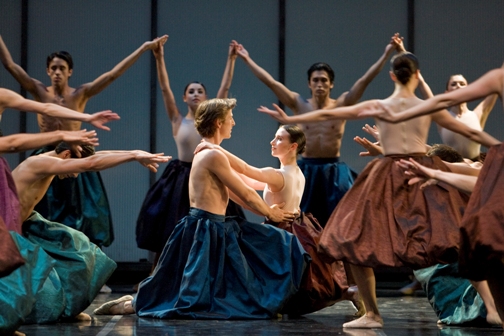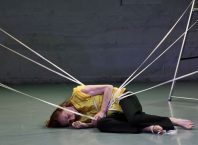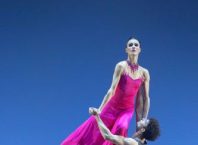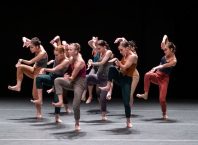
The Royal Winnipeg Ballet of Canada comes to Israel in October as part of Tel Aviv Dance 2010, for a series of seven performances, including Jerusalem and Haifa. The company will present a program of two very different works: Carmina Burana by internationally acclaimed choreographer Mauricio Wainrot and In Tandem choreographed by Peter Quanz, an emerging young choreographer.
Canada’s foremost ballet company, the Royal Winnipeg Ballet of Canada was founded in 1939 by Gweneth Lloyd and Betty Farrally, receiving its royal title in 1953. Arnold Spohr was the artistic director during the company’s formative years from 1958 to 1988, as it grew to acquire an international stature. A professional dance school was created in 1970 by former principal dancer David Moroni, and two thirds of the company’s dancers are graduates of the school. Current artistic director André Lewis has held the position since 1996, after a long history with the company. Lewis began as a dancer in the corps de ballet in 1979, was promoted to soloist in 1982 and joined the artistic staff in 1984.
Jewish-Argentinian choreographer Mauricio Wainrot was born in Buenos Aires to parents who escaped from Poland just before the war. Carmina Burana was originally choreographed for The Royal Ballet of Flanders in 1998, the work made its debut with the Royal Ballet of Winnipeg in 2002. Carmina Burana is the best known composition of Carl Orff (1895 – 1982). It is based on a collection of medieval poems – the complete Latin title is: Carmina Burana: Cantiones profanæ cantoribus et choris cantandæ comitantibus instrumentis atque imaginibus magicis (Secular songs for singers and choruses to be sung together with instruments and magic images).
The evening will open with In Tandem by rising choreographer Peter Quanz. Commissioned by the Guggenheim Works & Process Series, where it premiered on September 11, 2009, the neo-classical ballet for six dancers is set to music by Steve Reich. Originally commissioned by the Eighth Blackbird ensemble, Reich received the Pulitzer Prize in 2009 for Double Sextet, a work for two identical sextets of instruments – flute, clarinet, violin, cello, vibraphone and piano. It can be performed in two ways, either with 12 musicians, or, as it premiered, with six musicians playing against a recording of themselves. Here is a clip of the Eighth Blackbird ensemble in their first rehearsal of Reich’s work:
Royal Winnipeg Ballet performances in Israel:
Tel Aviv – Tel Aviv Performing Arts Centre (TAPAC) 03-6927777
14.10 at 21:00, 15.10 at 13:00, 16.10 at 21:00
Jerusalem – Sherover Hall, Jerusalem Theatre 02-6237000
18.10 at 21:00, 19.10 at 21:00
Haifa – Haifa Auditorium 04-8418411
20.10 at 21:00, 21.10 at 21:00





